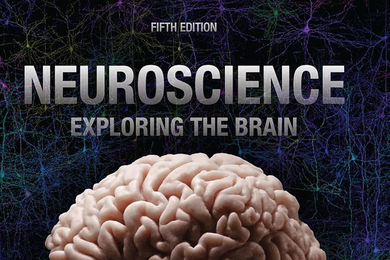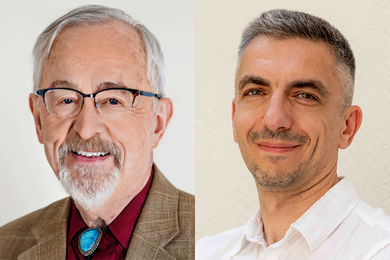Chia-Chiao Lin, an Institute Professor Emeritus at MIT who played a pivotal role in the development of applied mathematics both in the United States and in China, died Sunday in Beijing.
He was 96. The cause of death was heart failure, Lin’s family said.
Lin’s broad and seminal research, together with his service to the community, were instrumental in the growth of applied mathematics at MIT and elsewhere in the United States. More recently, he had helped build the field in China as a Distinguished Professor at Tsinghua University since 2002.
Lin joined MIT as an associate professor of applied mathematics in 1947, becoming a full professor in 1953. In 1966, he was named an Institute Professor — MIT’s most prestigious faculty appointment. He retired from MIT in 1987.
Real-world applications
Lin was an applied mathematician whose research initially concentrated on fluid mechanics, focusing on hydrodynamics stability and turbulence, and addressing the aerodynamics of gas turbines, oscillating airfoils and shock waves. His doctoral dissertation solved an outstanding problem, stemming from Werner Heisenberg’s work, concerning the stability of parallel flows. He also resolved a long-standing problem concerning the theory of asymptotic solutions of ordinary differential equations (of higher order than 2), which are uniformly valid around turning points.
With Theodore von Kármán, his thesis advisor, Lin proposed a spectral theory for homogeneous turbulence, further developing von Kármán’s similarity theory and the statistical theory of turbulence. These investigations in hydrodynamic stability and turbulence greatly impacted engineering and science fields dealing with fluid flow, including geophysical fluid dynamics. In 1955, Lin published a monograph titled “The Theory of Hydrodynamic Stability,” the first such publication in this developing field.
Lin’s research interests then turned to problems in the hydrodynamics of superfluid helium and astrophysics. In 1964, in collaboration with Frank Shu of the University of California at Berkeley, Lin advanced the density-wave theory of galaxy formation (based on the earlier work of Bertil Lindblad) to account for sustained spiral structures. He also contributed to related problems in gravitational collapse and star formation.
In 1974 Lin co-authored, with his former student L. A. Segel, the now-classic treatise, “Mathematics Applied to Deterministic Problems in the Natural Sciences.” More recently, in 1996, with Giuseppe Bertin, he published another monograph, “Spiral Structure in Galaxies: A Density Wave Theory.”
Contributions in China
For many years, Lin was interested in the development of science and education in China. In 1972, as the deputy leader of a delegation of Chinese-born American scientists, Lin returned to his homeland, receiving a warm welcome from Premier Zhou Enlai and other leaders. He visited China regularly in the ensuing years, inviting many well-known experts to give lectures there. He also facilitated study and research by Chinese scholars at MIT — many of whom have since become leaders in various fields in China.
In 2002, Lin returned to his alma mater, Tsinghua University, as Distinguished Professor. He founded the Zhou Pei-Yuan Center for Applied Mathematics — now an active hub of research in quantitative biology, applied partial differential equations, scientific computation, and other interdisciplinary subjects linking mathematics, natural sciences and engineering — and served as its honorary director, undertaking research on protein folding. He worked tirelessly at Tsinghua University to set an example for young researchers, overseeing the research of more than 10 PhD students.
Lin was also a visiting professor of mathematics at Florida State University from 1994 to 2011.
A celebrated scholar
Lin was born July 7, 1916, in Beijing. He received a BSc in physics from Tsinghua University in 1937 and an MSc in applied mathematics from the University of Toronto in 1941. He then earned his PhD, in aeronautics, from the California Institute of Technology in 1944; Caltech honored Lin with its Distinguished Alumni Award in 1992.
Lin did postdoctoral work at the Jet Propulsion Lab before joining the faculty of Brown University in 1945 as an assistant professor of applied mathematics, becoming an associate professor in 1946. He joined MIT’s mathematics faculty the following year.
Twice named a Guggenheim Fellow, in 1954 and 1960, Lin received major recognitions from a variety of professional societies, including the Otto Laporte Award of the American Physical Society. In 1975, he received the Timoshenko Medal of the American Society of Mechanical Engineering “for outstanding contributions to fluid mechanics, especially to hydrodynamic stability and turbulence, superfluid helium, aerodynamics and galactic structures.” He received the Award in Applied Mathematics and Numerical Analysis from the National Academy of Sciences in 1977 and the first Fluid Dynamic Prize of the American Physical Society in 1979.
In 1981, the MIT faculty selected Lin for the James R. Killian Jr. Faculty Achievement Award; he delivered the Killian Lecture to the MIT community in the spring of 1982. Lin’s Killian Award citation noted that he was highly influential in “developing a more comprehensive approach to applied mathematics.”
Within MIT’s Department of Mathematics, Lin served as the first faculty chair of the applied mathematics group, from 1961 to 1966. He was president of the Society for Industrial and Applied Mathematics from 1973 to 1974, and a member of its board of trustees from 1978 to 1980.
Lin held honorary doctorates from the Chinese University of Hong Kong (1973), Tsinghua University (1987) and Taiwan’s National Tsing Hua University (2005). He was also, his family said, an honorary professor at the Chinese Academy of Sciences and at Nankai University. His professional honors included selection as a fellow of the American Academy of Arts and Sciences (1951), as academician of Academia Sinica (1958), as a member of the National Academy of Sciences (1962), and as a foreign member of the Chinese Academy of Sciences (1994).
Lin was twice a member of the Institute for Advanced Study, in 1959 to 1960 and 1965 to 1966. He was also a member or fellow of the American Astronomical Society, the American Mathematical Society, the American Physical Society, the Society for Industrial and Applied Mathematics, and the Institute of Aerospace Sciences.
Lin is survived by his wife of 66 years, Shouying Liang Lin, of Beijing and Cambridge, Mass.; daughter Lillian Shengjung Lin and her husband, Alan Stephen Crawford, of Decatur, Ga.; sister Xiaoyuan Lin and her husband, Shukai Li; sister Xiaoying Lin and her husband, Junjie Gu; and brother-in-law Hongmo Dong. He is also survived by stepgrandson Scott Crawford and his wife, Shay, and their children; stepgrandson Joshua Taylor and his wife, Sarah, and their children; stepgranddaughter Yolanda Jones and her husband, Darius, and their children; and numerous cousins, nephews, nieces, great-nephews, and great-nieces.
Lin was preceded in death by his son Edward; brother Jiaxin Lin and his wife, Shunzu Huang; brother Jiatian Lin; brother Jiakeng Lin and his wife, Kanghuai Cheng; sister Xiaohua Lin; brother-in-law Shoupan Liang and his wife, He Fu; brother-in-law Shouchu Liang; and sister-in-law Shoubin Liang and her husband, Xiaoshen Chen.
He was 96. The cause of death was heart failure, Lin’s family said.
Lin’s broad and seminal research, together with his service to the community, were instrumental in the growth of applied mathematics at MIT and elsewhere in the United States. More recently, he had helped build the field in China as a Distinguished Professor at Tsinghua University since 2002.
Lin joined MIT as an associate professor of applied mathematics in 1947, becoming a full professor in 1953. In 1966, he was named an Institute Professor — MIT’s most prestigious faculty appointment. He retired from MIT in 1987.
Real-world applications
Lin was an applied mathematician whose research initially concentrated on fluid mechanics, focusing on hydrodynamics stability and turbulence, and addressing the aerodynamics of gas turbines, oscillating airfoils and shock waves. His doctoral dissertation solved an outstanding problem, stemming from Werner Heisenberg’s work, concerning the stability of parallel flows. He also resolved a long-standing problem concerning the theory of asymptotic solutions of ordinary differential equations (of higher order than 2), which are uniformly valid around turning points.
With Theodore von Kármán, his thesis advisor, Lin proposed a spectral theory for homogeneous turbulence, further developing von Kármán’s similarity theory and the statistical theory of turbulence. These investigations in hydrodynamic stability and turbulence greatly impacted engineering and science fields dealing with fluid flow, including geophysical fluid dynamics. In 1955, Lin published a monograph titled “The Theory of Hydrodynamic Stability,” the first such publication in this developing field.
Lin’s research interests then turned to problems in the hydrodynamics of superfluid helium and astrophysics. In 1964, in collaboration with Frank Shu of the University of California at Berkeley, Lin advanced the density-wave theory of galaxy formation (based on the earlier work of Bertil Lindblad) to account for sustained spiral structures. He also contributed to related problems in gravitational collapse and star formation.
In 1974 Lin co-authored, with his former student L. A. Segel, the now-classic treatise, “Mathematics Applied to Deterministic Problems in the Natural Sciences.” More recently, in 1996, with Giuseppe Bertin, he published another monograph, “Spiral Structure in Galaxies: A Density Wave Theory.”
Contributions in China
For many years, Lin was interested in the development of science and education in China. In 1972, as the deputy leader of a delegation of Chinese-born American scientists, Lin returned to his homeland, receiving a warm welcome from Premier Zhou Enlai and other leaders. He visited China regularly in the ensuing years, inviting many well-known experts to give lectures there. He also facilitated study and research by Chinese scholars at MIT — many of whom have since become leaders in various fields in China.
In 2002, Lin returned to his alma mater, Tsinghua University, as Distinguished Professor. He founded the Zhou Pei-Yuan Center for Applied Mathematics — now an active hub of research in quantitative biology, applied partial differential equations, scientific computation, and other interdisciplinary subjects linking mathematics, natural sciences and engineering — and served as its honorary director, undertaking research on protein folding. He worked tirelessly at Tsinghua University to set an example for young researchers, overseeing the research of more than 10 PhD students.
Lin was also a visiting professor of mathematics at Florida State University from 1994 to 2011.
A celebrated scholar
Lin was born July 7, 1916, in Beijing. He received a BSc in physics from Tsinghua University in 1937 and an MSc in applied mathematics from the University of Toronto in 1941. He then earned his PhD, in aeronautics, from the California Institute of Technology in 1944; Caltech honored Lin with its Distinguished Alumni Award in 1992.
Lin did postdoctoral work at the Jet Propulsion Lab before joining the faculty of Brown University in 1945 as an assistant professor of applied mathematics, becoming an associate professor in 1946. He joined MIT’s mathematics faculty the following year.
Twice named a Guggenheim Fellow, in 1954 and 1960, Lin received major recognitions from a variety of professional societies, including the Otto Laporte Award of the American Physical Society. In 1975, he received the Timoshenko Medal of the American Society of Mechanical Engineering “for outstanding contributions to fluid mechanics, especially to hydrodynamic stability and turbulence, superfluid helium, aerodynamics and galactic structures.” He received the Award in Applied Mathematics and Numerical Analysis from the National Academy of Sciences in 1977 and the first Fluid Dynamic Prize of the American Physical Society in 1979.
In 1981, the MIT faculty selected Lin for the James R. Killian Jr. Faculty Achievement Award; he delivered the Killian Lecture to the MIT community in the spring of 1982. Lin’s Killian Award citation noted that he was highly influential in “developing a more comprehensive approach to applied mathematics.”
Within MIT’s Department of Mathematics, Lin served as the first faculty chair of the applied mathematics group, from 1961 to 1966. He was president of the Society for Industrial and Applied Mathematics from 1973 to 1974, and a member of its board of trustees from 1978 to 1980.
Lin held honorary doctorates from the Chinese University of Hong Kong (1973), Tsinghua University (1987) and Taiwan’s National Tsing Hua University (2005). He was also, his family said, an honorary professor at the Chinese Academy of Sciences and at Nankai University. His professional honors included selection as a fellow of the American Academy of Arts and Sciences (1951), as academician of Academia Sinica (1958), as a member of the National Academy of Sciences (1962), and as a foreign member of the Chinese Academy of Sciences (1994).
Lin was twice a member of the Institute for Advanced Study, in 1959 to 1960 and 1965 to 1966. He was also a member or fellow of the American Astronomical Society, the American Mathematical Society, the American Physical Society, the Society for Industrial and Applied Mathematics, and the Institute of Aerospace Sciences.
Lin is survived by his wife of 66 years, Shouying Liang Lin, of Beijing and Cambridge, Mass.; daughter Lillian Shengjung Lin and her husband, Alan Stephen Crawford, of Decatur, Ga.; sister Xiaoyuan Lin and her husband, Shukai Li; sister Xiaoying Lin and her husband, Junjie Gu; and brother-in-law Hongmo Dong. He is also survived by stepgrandson Scott Crawford and his wife, Shay, and their children; stepgrandson Joshua Taylor and his wife, Sarah, and their children; stepgranddaughter Yolanda Jones and her husband, Darius, and their children; and numerous cousins, nephews, nieces, great-nephews, and great-nieces.
Lin was preceded in death by his son Edward; brother Jiaxin Lin and his wife, Shunzu Huang; brother Jiatian Lin; brother Jiakeng Lin and his wife, Kanghuai Cheng; sister Xiaohua Lin; brother-in-law Shoupan Liang and his wife, He Fu; brother-in-law Shouchu Liang; and sister-in-law Shoubin Liang and her husband, Xiaoshen Chen.






